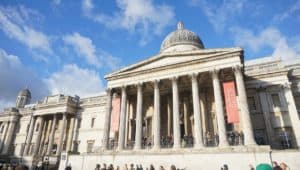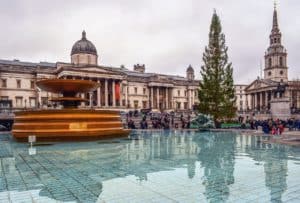The World’s Most Unusual Museums: Exploring Collections of Hair to Artefacts of Heartbreak

Updated On: April 22, 2024 by Maha Yassin
Historically, museums traditionally have been the custodians of history, art, and culture, displaying well-known artefacts that draw hundreds of thousands of visitors annually. However, tucked away in some corners of the world, there exist museums that defy convention and offer visitors a glimpse into the most unexpected and eccentric aspects of human interests. From strands of hair saved over centuries to heartfelt tokens from long-end relationships, these unusual institutions challenge our notions of what merits a place behind glass cases and velvet ropes.
These peculiar repositories captivate with their unique exhibits and serve as a testament to the diversity of human experiences and passions. Some celebrate the profound, like attempts to preserve the narratives of war and peace, while others dwell on the whimsical, displaying everything from culinary innovations to crowdsourced memorabilia. Established often out of personal passion projects, these museums have grown from temporary displays to permanent attractions, gaining international attention and fostering a deep connection with often-surprised visitors.
Unusual Museums: An Ode to Heartbreak
In exploring the globe’s most unconventional museums, we encounter spaces that encapsulate art and history and the nuanced spectra of human emotions. Notably, the Museum of Broken Relationships in Zagreb is a testament to the universal experience of heartbreak and failed relationships.
Museum of Broken Relationships
Nestled in the heart of Croatia’s historical capital, the Museum of Broken Relationships offers a poignant examination of loss and love’s labyrinths. Each exhibit here is more than an item; it’s a repository of intimate stories and personal relics from around the world, each narrating a unique tale of a relationship that has run its course. Zagreb thus becomes home to a truly global understanding of heartbreak, making it a beacon for those seeking solace in shared experiences of love lost.
Origin of the Heartbreak Museum
The genesis of this vibrant collection lies with two artists, Dražen Grubišić and Olinka Vištica. Following their separation, they conceived of an exhibit where the remnants of love could find a new purpose. What began as a cathartic project soon resonated with others, culminating in a travelling exhibition and, eventually, a permanent space in Zagreb. Their journey underscores a transformative narrative, recontextualising heartbreak as something that connects us all.
Underwater Wonders

We uncover the magic of subaquatic galleries where art meets the ocean. Let’s dive deep into one of the planet’s most unique repositories of creativity.
Cancun Underwater Museum
At the Cancun Underwater Museum, also known as MUSA, we find more than just an exhibition; it’s a marriage of aesthetics and marine conservation. Cancun, a city celebrated for its crystal-clear waters and vibrant marine life, hosts this innovative underwater museum, which rests within the boundaries of the Mexican National Marine Park.
The museum is home to over 500 sculptures, all crafted with marine-friendly materials to promote coral life. This submerged gallery showcases works by Jason de Caires Taylor and other artists, designed to evolve as they become encrusted with marine life.
It’s not just about the visual splendour. The sculptures also serve a vital purpose in coral reef restoration, drawing divers away from the natural reefs, thus allowing those ecosystems to rejuvenate. The careful deployment of the sculptures using materials conducive to coral growth demonstrates a commitment to the ocean’s wellbeing.
Visitors to MUSA can snorkel or dive to witness this interplay of human creativity and the natural evolution of coral reefs, making for an unmatched experience in the waters of Mexico. This museum isn’t only an attraction but a significant contributor to marine conservation efforts within the region.
Art in Unusual Forms

As we explore the breadth of creativity and expression, we find that art is not confined to traditional galleries. Unconventional museums around the globe curate collections that redefine the notion of art.
Museum of Bad Art
The Museum of Bad Art is a unique institution that celebrates art that is too “bad” to be ignored. Residing in the United States, it boasts an eclectic array of artworks that would likely not be displayed in prestigious venues but captivate with their charm. From paintings that miss the mark to sculptures that puzzle, this museum rethinks artistic success with a wink.
Prague’s Kafka Museum
In Prague, Czech Republic, the Kafka Museum pays homage to one of the city’s most enigmatic literary figures. Through immersive and interactive exhibits, it presents a visual and audio experience that encapsulates Franz Kafka’s work’s surreal and often unsettling nature. This exceptional museum revisits the narrative of art, placing storytelling at its core.
Cultural Cuisine Exhibits
Exploring museums dedicated to food gives us an excellent insight into the culinary traditions that define cultures worldwide. One such museum celebrates a German snack that has tantalised taste buds and has become a cultural icon.
Currywurst Museum of Berlin
The Currywurst Museum, located in Berlin, Germany, was a tribute to one of Germany’s most popular snacks – the currywurst. Berlin’s love affair with currywurst began just after World War II, and the museum offered a delightful journey through its history, ingredients, and global influence. Visitors could immerse themselves in interactive displays, savour the aroma of spices, and understand how this humble dish became a gastronomic emblem of the German capital.
Odd Collections Around the World

We explore some of the globe’s most peculiar museums, where extraordinary collections transform the ordinary into the extraordinary. Prepare to journey to Iceland’s unique tribute to male genitalia and a delightful gallery where vintage playthings spring to life.
Iceland Phallological Museum
The Iceland Phallological Museum is a unique institution dedicated to presenting a comprehensive display of penile parts. From the land of ice and fire, it is known to be the world’s only museum devoted to phallic specimens, boasting a collection that spans from the animal kingdom to mythical interpretations. Not for the squeamish, it provides a clinical yet fascinating look at the diversity of male reproductive organs across various species.
Gallery of Unique Wind-Up Toys
Once a ubiquitous delight in households, wind-up toys find universal appreciation at this specialised gallery. It’s a nostalgic paradise where one can witness these timeless playthings’ charm and intricate craftsmanship. Each piece in the collection brings a sense of wonder, showcasing the evolution of wind-up toys throughout history and celebrating their place in the world of collectables.
Narratives of War and Peace

The range and depth of human conflict are encapsulated within war museums worldwide, from the profound to the personal, mapping a journey through history’s most tumultuous times.
Museums Capturing War
Museums dedicated to the narratives of war serve as custodians of history, artfully curating the remnants of conflict to educate and reflect. Noteworthy among them is the War Museums‘ role in post-conflict societies, where they facilitate understanding and peacebuilding. For instance, tourism’s positive contribution to peace is evident in places that chronicle war’s aftermath, fostering a narrative of despair but also of hope and reconciliation.
Significant, too, are museums that focus on unique aspects of wartime experience, such as the Women’s Active Museum on War and Peace in Tokyo, which confronts Japan’s aggressive past by highlighting women’s suffering during World War II. These institutions play an essential role in truth-telling and contribute to ongoing efforts for historical justice and societal healing.
By presenting artefacts, personal stories, and interactive exhibits, war museums immerse us in the realities of past conflicts, prompting critical reflection on the consequences of war and the price of peace. The narratives they put forth preserve our history and serve as potent reminders of the need for dialogue and understanding in our times.
Museum Interactions and Souvenirs

When visiting the world’s most unusual museums, the experience often extends to the selection of keepsakes available. The gift shops present a unique opportunity to take a tangible piece of your museum experience home.
The Role of Gift Shops
At the heart of museum memorabilia, gift shops are pivotal for visitors transitioning from passive observers to active participants. They are not just retail spaces but integral to the museum experience and contribute to its financial sustenance. Our interaction with gift shops often shapes our lasting impressions of a museum visit.
In these shops, visitors find many items ranging from the educational to the outlandishly thematic. Every description of a souvenir is meticulously crafted to evoke the spirit of the exhibits you’ve just witnessed. Whether it’s a traditional postcard, a bespoke piece of merchandise, or an educational game, these items are a personal account of your visit.
Museums acknowledge the evolving expectations of their visitors and, in response, gift shops often update their settings to offer online purchasing options. This allows for the gifting and sharing the experience with friends and family who could not be there. The availability of webshops makes the sense of discovery in museum shops accessible to all, cutting across geographical boundaries.
Navigating through the array of products, we realise that each item tells a story, just like every exhibit within the museum walls. Our selections often reflect the profound connections we’ve made during our visit, making the gift shop an essential last stop before we carry a piece of history into our daily lives.
From Temporary to Permanent Exhibits
In the realm of the unconventional, some temporary exhibitions have found lasting resonance and have transitioned into permanent installations, securing their place in the cultural landscape for years to come.
Finding a Permanent Home
When an exhibition captures the public’s imagination, it often journeys from a fleeting experience to a fixture in a dedicated space. Notable among these is the Museum of Broken Relationships, which found its permanent home in the historic Upper Town of Zagreb, Croatia. What began as a travelling presentation of personal remnants from bygone relationships has rooted itself firmly in the collective consciousness and established a lasting venue where these stories of loss and love are enshrined.
The Museum is a testament to the fact that even objects from our past failed romances can be woven into the tapestry of art and culture, lending a universal voice to the individual expressions of heartache. By finding a permanent home, these exhibits have transcended their temporary nature, becoming a part of the society and culture of their locales, inviting us to explore the depths of human emotion and experience.
Global Reach of Unusual Museums

The world’s most unusual museums provide a riveting glimpse into the eccentricities that pique human curiosity on a global scale. These institutions stand as beacons of the unique and the unexpected, challenging perceptions of what museums can offer.
Expanding from Local to Universal
New York and Los Angeles have long embraced the unconventional in terms of attraction and entertainment. They house institutions that have grown from local oddities to universally known destinations. In New York, museums are dedicated to even the most niche aspects of life, reflecting the city’s diverse and vibrant culture. Similarly, Los Angeles boasts unconventional showcases that turn Hollywood’s penchant for the dramatic into a display of the novel and the niche.
From historical spots highlighting the unusual, like the Museum of the American Gangster in New York, to more contemporary and emotional experiences, such as the Museum of Broken Relationships, these museums remind us of our collective eccentricities and shared connections. They’ve become popular places for their oddity and the universal themes they explore, resonating with people from all walks of life.
Moreover, the rise of online platforms, such as www.connollycove.com, has been instrumental in showcasing these unique museums to a broader audience. With in-depth features on each attraction, visitors worldwide can access and plan their visits to these unusual places, making them part of a cohesive global experience.
By their very nature, Unusual museums are ambassadors that extend a unique blend of education and entertainment, proving that the reach of museums is not confined by geography. They invite us to celebrate differences and embrace the unexpected, making our global cultural tapestry more prosperous and inclusive.
The Power of Crowdsourced Exhibits

Crowdsourcing has revolutionised the way museums and exhibitions are created by leveraging the collective knowledge and artefacts of the public. This approach has led to the development of deeply personal and eclectic collections that resonate with diverse audiences.
Atlas Obscura and Public Contributions
At Atlas Obscura, a spirit of adventure and discovery is fuelled by public contributions that reveal hidden wonders worldwide. For example, through crowdsourced information, one might uncover an obscure museum dedicated to prosthetic limbs, where the history and evolution of prostheses are on full display. Such an exhibit showcases medical advancements and tells a story of human resilience and innovation.
In another instance, an enthusiast may stumble upon a collection centring on axes, detailing their use throughout history, from survival tools to modern-day sporting equipment. Each piece may have been donated or suggested by individuals with a keen interest in the topic, enhancing the exhibit’s authenticity and connection to the community.
Crowdsourced exhibits like these broaden our horizons, allowing us to explore themes that traditional museums might overlook. Thanks to contributions from around the globe, the content on platforms like Atlas Obscura expands continuously, captivating us with an ever-growing compendium of the quirky, the extraordinary, and the profoundly human.
The Art of Healing Through Exhibitions

In museums, exhibitions are embracing the role of aiding emotional recovery, offering visitors knowledge and wellness through contemplation and understanding.
Museums and Emotional Recovery
Museums are becoming sanctuaries for healing, recognising art’s profound impact on individual wellbeing. One striking example is the use of art therapy in museum settings. We see institutions integrating therapeutic activities into their programmes, reshaping the visitor experience to encompass emotional healing alongside cultural education.
The multifaceted approach involves guided tours, workshops, and interactive installations that encourage personal reflection. These initiatives often collaborate with mental health professionals to ensure that the methods employed are conducive to emotional recovery. For instance, art-making sessions relieve stress, whereas curated exhibitions focus on themes that echo visitors’ personal experiences, fostering a sense of connection and catharsis.
Through the thoughtful curation of exhibitions, museums are acknowledged as vital spaces for healing. They are not merely passive spaces for observation but active participants in the journey towards emotional resilience and recovery.
FAQs
When curating a travel itinerary for those with a penchant for the quirky or the extraordinary, museums showcasing the unconventional become invaluable destinations. These repositories of rare collections offer glimpses into the peculiar corners of human interest and history.
What are some of the most unconventional museums one can visit in Europe?
In Europe, one can explore an array of distinctive museums, such as the Museum of Broken Relationships in Zagreb, Croatia, which curates artefacts from failed romances, and the Sulabh International Museum of Toilets in New Delhi, which chronicles the history of sanitation and toilets.
Could you list unusual museums that are considered a must-see globally?
Globally, unusual museums include the Museum of Bad Art in Massachusetts, which celebrates art that is too “bad” to be ignored, and the Cupnoodles Museum in Yokohama, Japan, which provides an interactive experience of instant noodles.
Where might one find distinctive art museums that deviate from the norm?
Distinctive art museums that break away from conventional themes can be found in many places. For instance, Zagreb’s Museum of Broken Relationships offers a creative take on art by exhibiting remnants of past relationships.
How does the Museum of Bad Art differentiate itself from traditional art institutions?
The Museum of Bad Art stands apart by exclusively showcasing art traditionally deemed not meeting mainstream galleries’ standards, thus celebrating the creators’ enthusiasm and effort regardless of the final outcome.
What unique experiences do oddity-centric museums offer to their visitors?
Museums focusing on oddities offer visitors an experience that challenges perceptions, such as exhibitions that may provoke amusement, curiosity, and sometimes a deeper understanding of the unconventional aspects of cultures and history.
Are there any lesser-known museums that showcase everyday items, such as The Bread Museum?
Yes, several lesser-known museums, like The Bread Museum in Ulm, Germany, dedicate their displays to the history and significance of bread, revealing the everyday item’s role in different cultures and times.






